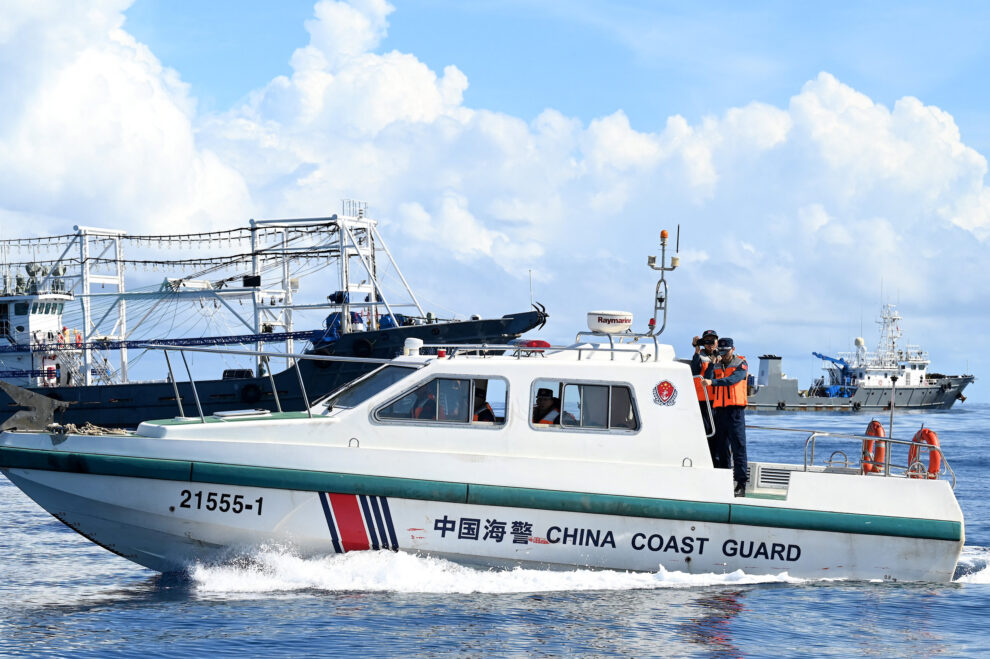China plans to send government vessels near a group of Japan-controlled islands on every day of 2024 in order to assert its claim to the disputed territory, according to a report out of Tokyo.
During a recent visit to the Chinese coast guard’s East China Sea command headquarters, Chinese leader Xi Jinping emphasized the need to “constantly strengthen” efforts around the Senkaku Islands, Japan’s Kyodo News said Saturday, citing an unnamed source.
Known in Chinese as the Diaoyu Islands, the uninhabited Senkakus comprise five islets and three rocks approximately 200 miles southwest of Japan’s Okinawa prefecture. Beijing and Tokyo have been locked in ever-closer standoffs over the territory since the Japanese government nationalized the islets in 2012.
China’s large coast guard vessels—some armed with autocannons—harass local fishing boats while anchoring in Japan’s claimed territorial waters for record durations, Tokyo says. Beijing’s next move could further escalate the long-running territorial spat with the U.S.’s most important ally in the region.
“We can only move forward, not backward. We will never let even 1 millimeter of our territory be taken,” Xi told China’s coast guard personnel, according to Kyodo.
As part of Beijing’s plan to maintain a permanent coast guard presence near the disputed islets every day this year, Chinese maritime law enforcement ships would conduct inspections of Japanese fishing vessels operating in the area “if necessary,” the report said.
The Chinese government tried the same tactic in the past by threatening to board Taiwanese merchant ships in an effort to assert de facto control over contested waters. Subject matters experts describe it as a form of “lawfare” against China’s adversaries.
“We are aware of the media report, however the government of Japan has not confirmed such a plan,” Shikata Noriyuki, cabinet secretary for the Prime Minister’s Office, told Newsweek Thursday.
He said Japan considers the Chinese coast guard’s continued presence in the Senkakus’ 24-nautical-mile contiguous zone and 12-nautical-mile territorial waters to be “extremely serious.” Tokyo has “repeatedly lodged strong protests” with Beijing, and the Japanese coast guard has consistently broadcast warnings to their Chinese counterparts, he said.
Japan will “continue to take all possible measures to gather information and conduct surveillance activities with a sense of urgency and in cooperation with relevant Japanese ministries and agencies,” the diplomat added.
As with the Philippines, however, the traditional channels appeared to be yielding few results.
The United States does not take a position on sovereignty over the Senkakus, but it does recognize Japan’s administration of the islets.
Last year, U.S. President Joe Biden reiterated the U.S.’s “unwavering” commitment to Japan’s defense under their security treaty, which covers attacks against Japanese government vessels in the Senkakus.
It means any resulting clashes could draw American forces into a direct conflict with China. The same risk exists in the South China Sea, where Chinese coast guard patrols have been testing the Philippines, another long-time U.S. ally.
The Chinese and Japanese foreign ministries did not immediately return Newsweek‘s separate written requests for comment.
Rahm Emanuel, the U.S. ambassador to Japan, posted a scathing rebuke on X (formerly Twitter) in an apparent reaction to Kyodo’s report.
“On New Year’s Day [People’s Republic of China] leadership announced that they will keep ships in and around Japan’s Senkaku Islands for 365 consecutive days, quite the New Year’s resolution,” he wrote.
“Meanwhile, China faces record high youth unemployment, record low housing valuations, and a record industrial contraction,” the diplomat said in one of his signature jabs.
The latest data released by Japan’s Foreign Ministry reveals a regular Chinese coast guard presence in and around the Senkakus in the past year. As of late November 2023, incursions into the islets’ territorial waters ranged from 4 to 16 vessels per month, while the contiguous zone saw dozens of Chinese ships per month.
Source: Newsweek






























